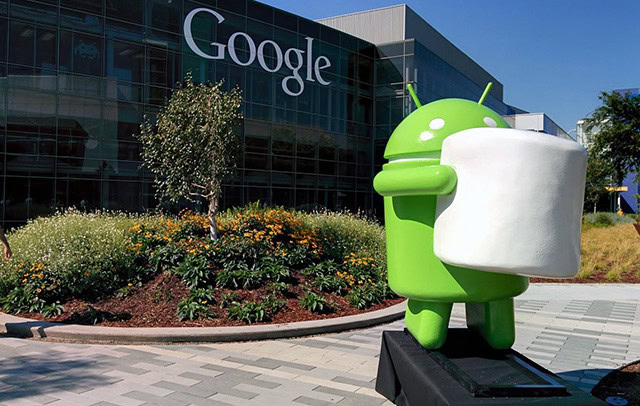Affiliate links on Android Authority may earn us a commission. Learn more.
Why is Marshmallow dubbed Android 6.0? Is it worthy of such a big version jump?
Published onAugust 19, 2015
We finally have the gooey answer to the Android M conundrum and it’s Marshmallow. Not a major shock, it was always a front-runner, but some people have been surprised by the fact that Marshmallow will be version 6.0 of Android and not 5.2 or 5.5. Should a whole number leap imply some major overhaul? Why is Google jumping straight to 6.0? There are various possible reasons.
It never made sense
Did Google’s version system ever really make sense? Anyone who has worked with programmers will understand the often arbitrary nature of version numbers. Traditionally, the first number is supposed to mark a major version and the second number a minor version, but that’s just a general convention, it’s not an unbreakable rule. In practice, version numbers often just mark the point that something was pushed out the door. They’re useful because they make it possible to track down problems later, but they don’t really tell the end user anything, and they’re not really meant to.
Let’s take a brief look at the historical line-up of Android versions:
- Android 1.0
- Android 1.1
- Android 1.5 Cupcake
- Android 1.6 Donut
- Android 2.0 Éclair
- Android 2.2 Froyo
- Android 2.3 Gingerbread
- Android 3.0 Honeycomb
- Android 4.0 Ice Cream Sandwich
- Android 4.1 (4.2, 4.3) Jelly Bean
- Android 4.4 Kitkat
- Android 5.0 Lollipop
Take a look through the versions and try to find a pattern that establishes consistently why some versions are whole number leaps and others aren’t. The closest you could argue is probably that whole numbers indicate an aesthetic leap, but Éclair didn’t really and Marshmallow won’t either. What does it matter when the system never really made sense anyway?
The dessert names are for users, marking larger leaps of style and function, but even the incremental updates within names have sometimes delivered more than just bug fixes. There’s no real consistency there.
Maybe it is a major version

Perhaps you could argue that Marshmallow is a major update, even if there isn’t an aesthetic overhaul. We’re getting a much improved, granular app permission system, a revamped payment system in Android Pay, contextual data with Now on Tap, support for fingerprint sensors, seamless custom Chrome tabs for apps, deep linking directly into apps, better cut and paste, support for USB Type C, a battery life boost with Doze, and the list goes on. Check out the Diving into M series for more.
That sounds like a lot. But then Froyo, Gingerbread, and Jelly Bean all delivered long lists of improvements without getting a number bump. Push notifications, Wi-Fi hotspot functionality, NFC, Google Now, IR blaster support, Bluetooth LE, and many other things came without whole number updates. What makes Marshmallow different?
Leaving Lollipop behind
It could be just as much to do with distancing Android from version 5.0 Lollipop as it is with reaching version 6.0. It’s no secret that Lollipop has negative associations for some people. There have been serious battery life issues for a lot of devices, Wi-Fi problems, lagging, stuttering, and frequent crashes, not to mention a host of smaller bugs. Version 5.1 doesn’t seem to have solved everyone’s issues, either.
It has also been far from a smooth roll out. Google’s latest figures suggest 5.0 adoption is at 15.5% with 5.1 accounting for another 2.6%. Bugs galore will ensure that Lollipop isn’t as fondly remembered as it might have been, but it’s not just the problems, it’s also the design changes. The Priority Mode has not been popular with people who want a simple silent option, widget support disappeared from the lock screen, and not everyone likes the new Material Design aesthetic.
Microsoft was so keen to distance itself from the unpopular Windows 8 that it skipped a whole number to land on Windows 10. Maybe Google is trying to make a similar break and show clearly that Marshmallow has moved on from Lollipop. If you didn’t like 5.0 then try 6.0.
Switching to the annual release cycle
We were discussing how a yearly release cycle could improve the Android experience a while back. Predictability and stability makes it easier for everyone to plan. It will help tackle the fragmentation issue and introduce a bit more clarity. OEMs, carriers, and developers can work with an established schedule far more easily than a series of random updates. It also means one big exciting release with the attendant fanfare each year, instead of a steady dribble of smaller improvements. That’s something that the media and consumers are more likely to get excited about.
It makes a lot of sense to assign a new name and number to the annual update and to save those .x releases for minor changes and bug fixes. It’s nice and neat. It’s a system that makes logical sense. Everyone can grasp what’s going on and that can only be a good thing.
Android next

Whatever dessert it’s named after matters a great deal less than what it’s like to use, and the version number matters even less than that. There’s really no reason for most people to care. Suffice to say that Android keeps on getting better and Android 6.0 Marshmallow looks like a real improvement that delivers a nice mix of new features and smart refinements to what we have already.
One drawback of this shift in mindset for the annual release schedule is that we now have 12 months of speculation about what Android N will be called. Neapolitan ice cream? Nut brittle? My money is on nougat. You heard it here first.
